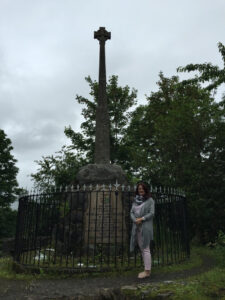
THE MEMORIAL COMMEMORATING THOSE LOST IN THE MASSACRE.
The Glencoe Massacre may have occurred more than three hundred years ago on February 13th, 1692, but it remains a very sensitive subject for MacDonalds and Campbells even today. For twelve days, soldiers—both English and Scottish—billeted in Glencoe and were provided with food, drink, and entertainment until the weather improved. Instead of leaving peacefully and thanking MacIain the clan chief, the troops committed one of the most heinous crimes in Scottish history.
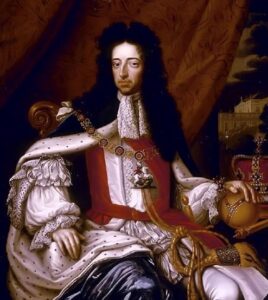
KING WILLIAM
Both Highland clans carry a deep respect for Highland law and customs but disagree as to whom is truly to blame for the horrible act on that fateful day in February. Both sides do agree, however, that certain individuals should have been prosecuted for their involvement, but because of the politics at the time and King William’s probable hand in the matter, those people were not punished sufficiently.
There were several key figures involved in the attack and a definite hierarchy within the chain of command. Naturally, King William was at the pinnacle of the chain of command. During the Glorious Revolution in England when he overthrew the Catholic King James II—who was, by the way, his father-in-law—several Highland clans were not happy.
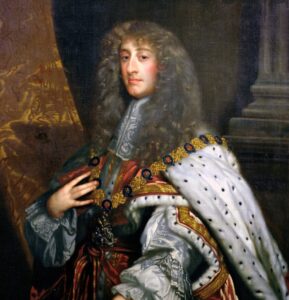
KING JAMES II
James was a Scot by birth and the younger brother of Charles II, so when Charles died without a legitimate heir, he naturally took the throne. But his reign only lasted a little over three years, when he was sent into exile in France after making some arrangements with Louis XIV.
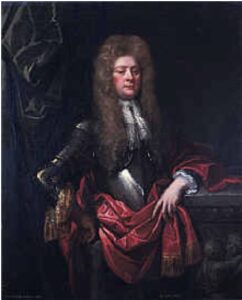
JOHN DALRYMPLE, 1ST MASTER OF STAIR
There was dissent between the clans and question as to whether William was the true king and belonged on the throne. So when King William required each of the clan chiefs to sign a document pledging their loyalty to him, not all of them were quick to grab a quill and ink. The MacDonald chief of Glencoe, MacIain, was offered indemnity—like all the others—if he signed and took the oath before January 1, 1692. However, a few things happened to delay his pledge. First, he didn’t get word of this decree until it was due. Second, a huge winter storm arrived, making the passage south to Inveraray impossible. Third, he headed north instead to Fort William to sign, but there was no official there to take his oath, so he was turned away. By the time he signed the document, it was January 6th, and William’s secretary of state for Scotland, John Dalrymple, Master of Stair, who was well known for his distaste of the clans, issued an order for military punishment against the MacDonalds of Glencoe.

JOHN CAMPBELL, EARL OF BREADALBANE
John Campbell, Earl of Breadalbane, the man just under Dalrymple, regularly quarreled with the MacDonalds and was likely thrilled with this information. Over the years, the Campbells and MacDonalds had regularly stolen each other’s cattle and laid claim to each other’s lands. So even though other clan chiefs swore their allegiance later than January 1st, and others swore by proxy, only MacIain was excluded from indemnity. For this reason, many believe the orders to attack that morning in February came from Breadalbane, who held a burning grudge against the MacDonald clan.
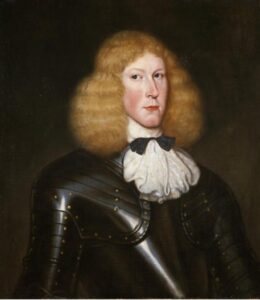
A YOUNG ROBERT CAMPBELL, GLENLYON
Fortunately for Breadalbane, he had a cousin he could easily take advantage of because of his financial desperation. Robert Campbell of Glenlyon was on the brink of bankruptcy due to his heavy drinking and gambling and often expressed outward hatred for the MacDonalds. Knowing this, Breadalbane offered him a salary if he would accept a commission as the captain in charge of marching his regiment to Glencoe that winter. Whether or not Breadalbane already had the attack in mind, remains in debate. Nonetheless, on the evening of February 12th, Glenlyon received written orders “to put all (MacDonalds) to the sword under seventy”.

THE COMMEMORATIVE PLAQUE THAT LIES AT THE BASE OF THE MONUMENT IN GLENCOE
Years later, an inquiry into the attack was made because word of it had traveled all over England and people were outraged. King William, having thoroughly denied that he had played any part in the matter, was pressured by his wife Mary to investigate. In the end, those at the top of the chain of command—Dalrymple and Breadalbane—were barely punished, and Robert Campbell, Breadalbane’s scapegoat died a social pariah and penniless. Naturally, the light punishments left many to believe the king undoubtedly had a hand in it.
